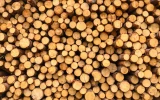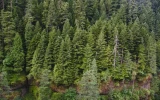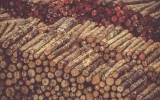How Many Tons of Timber per Acre (on Average)?
On average, the amount of timber that can be harvested from an acre of land varies greatly depending on a number of factors, including tree species, age, and density. In this article, we'll give you a quick guide on just how much timber you can expect to harvest from your land per acre.
An average acre of forest land in the U.S. contains 39.3 tons of standing timber. Clearcut harvests can generate roughly 80–105 tons of timber per acre. Thinning harvests, on the other hand, can generate between 25 and 40 tons of timber per acre.
Different forest types also have different timber yields. A mature hardwood forest might have a lesser yield of timber per acre compared to a mature softwood forest. Below, let's take a closer look at how timber yields can vary across different forest types.
Summary
- Hardwood forests typically yield between 20 and 40 tons of timber per acre, while softwood forests can yield between 40 and 70 tons per acre.
- A mature tropical forest can yield between 100 and 200 tons of timber per acre, while a mature temperate forest might yield between 20 and 70 tons per acre.
- Clearcutting can result in the harvest of between 80 and 105 tons of timber per acre, while selective cutting may result in the harvest of between 30 and 50 tons per acre.
- Mechanized harvesting can produce between 40 and 70 tons of timber per acre, while manual harvesting may produce between 20 and 40 tons per acre.
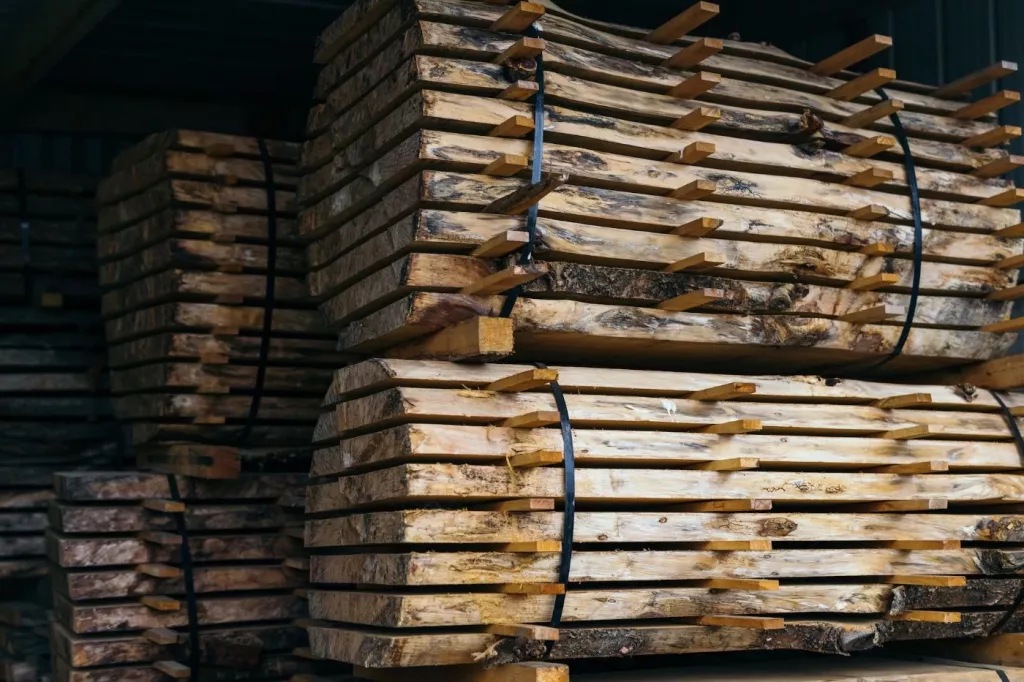
On this page:
Timber Yields for Different Forest Types
Different forest types have different yields, which can vary widely depending on a range of factors, including tree species, age, and density. In this section, we'll take a closer look at how timber yields can vary across different forest types.
| Forest Type | Tree Species | Average Timber Yield per Acre |
|---|---|---|
| Hardwood forest | Oak, Maple, Birch, Beech, Hickory, Walnut, Cherry, Ash | 20-40 tons |
| Softwood forest | Pine, Spruce, Fir, Cedar, Hemlock, Douglas Fir, Redwood, Cypress | 40-70 tons |
| Coniferous forest | Pine, Spruce, Fir, Cedar, Hemlock, Douglas Fir, Redwood, Cypress | 40-70 tons |
| Deciduous forest | Oak, Maple, Birch, Beech, Hickory, Walnut, Cherry, Ash | 20-40 tons |
| Tropical forest | Mahogany, Teak, Rosewood, Ebony, Kapur, Merbau, Jelutong, Shorea | 100-200 tons |
| Temperate forest | Pine, Spruce, Fir, Cedar, Hemlock, Douglas Fir, Redwood, Cypress, Oak, Maple, Birch, Beech, Hickory, Walnut, Cherry, Ash | 20-70 tons |
Hardwood forests vs. softwood forests
Hardwood forests are typically composed of broad-leaved trees, such as oak, maple, and birch, while softwood forests are dominated by conifers, such as pine, spruce, and fir.
On average, hardwood forests tend to yield less timber per acre than softwood forests. A mature hardwood forest might yield between 20 and 40 tons of timber per acre, while a mature softwood forest might yield between 40 and 70 tons per acre.
The value of an acre of hardwood timberland may escalate from $2,000 up to $50,000, depending on the species, age, and quality of the trees.
Coniferous forests vs. deciduous forests
Coniferous forests are dominated by coniferous trees, while deciduous forests are composed of broad-leaved trees that shed their leaves annually.
Coniferous forests tend to yield more timber per acre than deciduous forests. A mature coniferous forest might yield between 40 and 70 tons of timber per acre, while a mature deciduous forest might yield between 20 and 40 tons per acre.
Douglas fir, a coniferous tree, is one of the fastest-growing timber tree species that can help you annually earn $4,000 - $8,000 per acre.
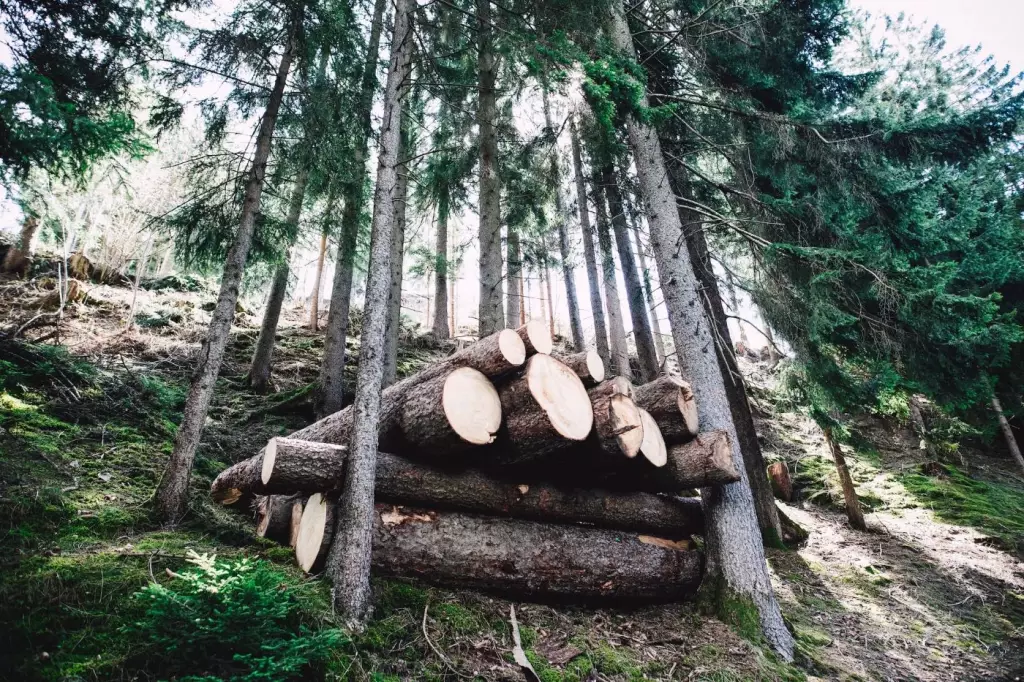
Tropical forests vs. temperate forests
Tropical forests tend to have higher tree densities and faster growth rates than temperate forests, which can lead to higher yields per acre.
A mature tropical forest might yield between 100 and 200 tons of timber per acre, while a mature temperate forest might yield between 20 and 70 tons per acre.
Timber Yields Based on Harvesting Methods Used
Each method has its own advantages and disadvantages, and the choice of method will depend on a number of factors, including the type of forest, the size of the trees, and the goals of the landowner. Here are some of the most common timber harvesting methods:
| Harvesting Method | Average Tons of Timber per Acre |
|---|---|
| Clearcutting | 80-105 |
| Selective cutting | 30-50 |
| Mechanized harvesting | 40-70 |
| Manual harvesting | 20-40 |
| Thinning | 25-40 |
Clearcutting vs. selective cutting
Clearcutting is a method of timber harvesting in which all of the trees in a given area are cut down at once. This method is typically used when the goal is to quickly harvest a large amount of timber.
Clearcutting can be an efficient method of harvesting, but it can also have negative impacts on the environment, including soil erosion and loss of habitat for wildlife.
On the other hand, selective cutting is a method of timber harvesting in which only certain trees are cut down, leaving the rest to continue growing.
This method is typically used when the goal is to maintain the health and diversity of the forest. Selective cutting can be more labor-intensive than clearcutting, but it can also be more environmentally sustainable.
Mechanized vs. manual harvesting
Mechanized harvesting involves the use of heavy machinery, such as chainsaws and harvesters, to cut down and transport trees.
This method can be faster and more efficient than manual harvesting, but it can also be more expensive and can have a greater impact on the environment.
Manual harvesting, on the other hand, involves the use of hand tools, such as axes and saws, to cut down and transport trees.
This method can be slower and more labor-intensive than mechanized harvesting, but it can also be more environmentally friendly and provide more employment opportunities for local workers.
Thinning
Thinning is a method of timber harvesting in which a portion of the trees in a given area are cut down, leaving the remaining trees to continue growing.
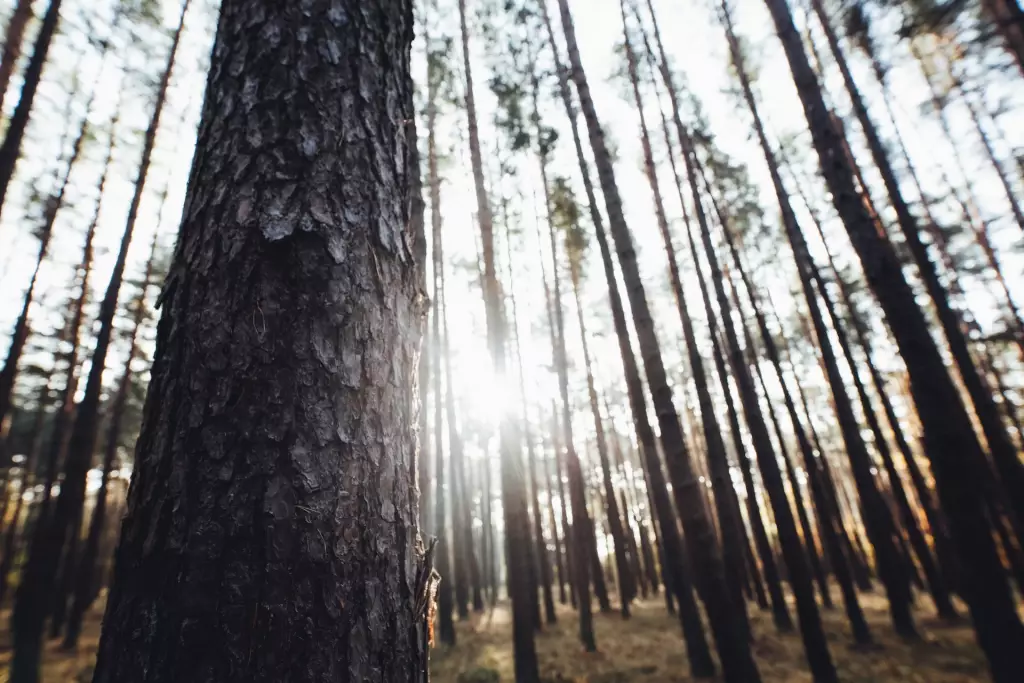
Thinning can be used to promote the growth of the remaining trees, improve the health of the forest, and increase the value of the timber. It can be done using either mechanized or manual harvesting techniques, depending on the size of the trees and the goals of the landowner.
Factors Affecting Timber Yields
There are several factors that can affect the yield of timber per acre and here are a few that you should keep in mind:
Tree species and growth rates
Different tree species have different growth rates, which can affect their productivity and the amount of timber that can be harvested from them.
Pine trees are generally fast-growing and can reach maturity in as little as 25 years, making them a popular choice for timber production. Oak trees, on the other hand, grow more slowly and can take up to 70 years to reach maturity.
While oak may not be as productive as pine, it is highly valued for its strength and durability, making it a preferred choice for furniture and flooring. See how much logging companies pay for oak trees and other hardwood trees in this article.
Other factors that can affect the growth rate and productivity of trees include genetics and the quality of the seedlings used for planting.
For example, genetically improved seedlings can produce trees that grow faster and are more resistant to pests and diseases. Additionally, the quality of the soil, water, and climate can also impact tree growth and productivity.
Some other fast-growing tree species include eucalyptus, poplar, and birch. These trees are often used for pulp and paper production, as well as for bioenergy.
Slower-growing species include mahogany, teak, and walnut, which are highly valued for their wood quality and are often used for high-end furniture and cabinetry.
To know how much you can possibly earn from an acre of timber, you can read this article.
Forest age and stand density
Younger forests may not have as much timber per acre as older forests, but they may have more potential for future growth. On the other hand, older forests may have more timber per acre, but the trees may be nearing the end of their productive life.
Trees in older forests tend to have denser wood and fewer knots, making them more valuable for certain types of products such as furniture or flooring. However, younger trees may be more suitable for paper or pulp production.
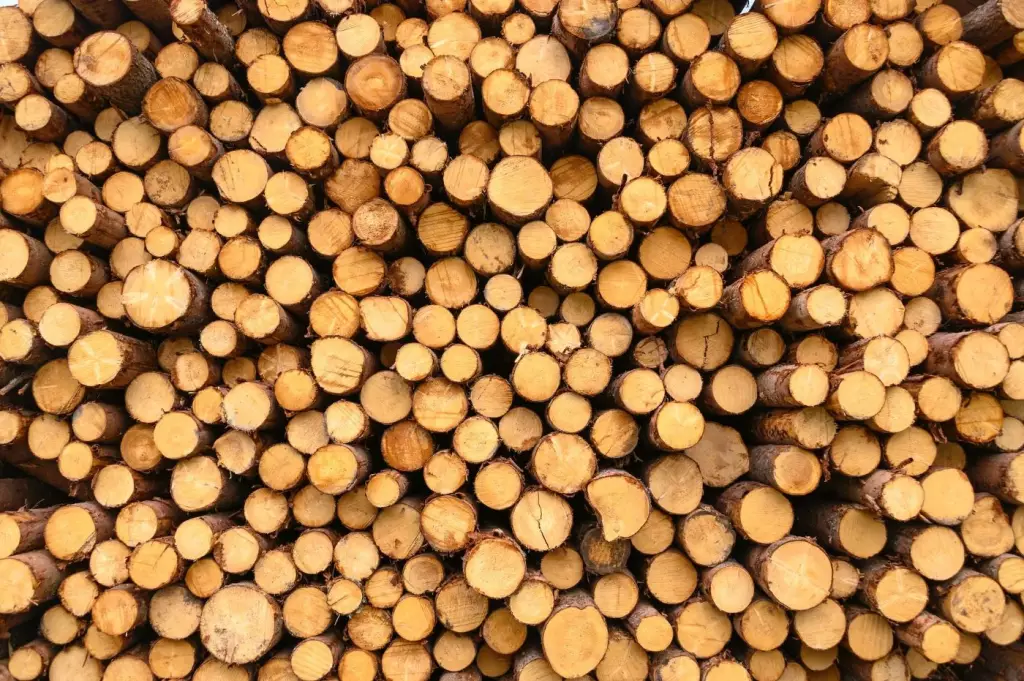
Stand density, or the number of trees per acre can also impact the health and growth of the forest. Overly dense stands can lead to competition for resources such as water and sunlight, resulting in stunted growth and increased susceptibility to disease and pests.
On the other hand, stands with too few trees may not be able to fully utilize available resources, resulting in lower productivity.
Soil fertility and site quality
A tree's growth rate and overall health can be greatly influenced by the quality of the soil it is growing in. Fertile soils with good drainage and access to nutrients will typically support faster growth and better timber production than poor soils.
In addition to soil fertility, trees growing on south-facing slopes will generally receive more sunlight and warmth, while those growing on north-facing slopes may be cooler and moister. This can impact a tree's growth rate and overall health, as well as its susceptibility to pests and diseases.
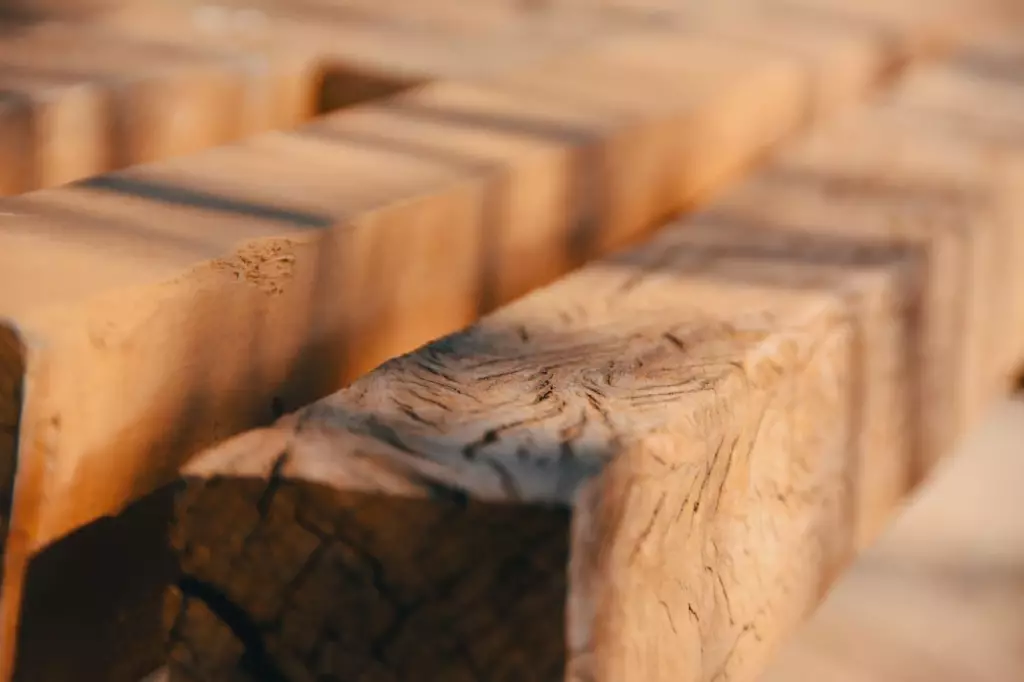
Other factors that can affect site quality include soil texture, pH levels, and the presence of other vegetation or competing plants.
By carefully evaluating these factors and selecting the right tree species for a given site, land managers can help ensure optimal growth and timber production over the long term.
